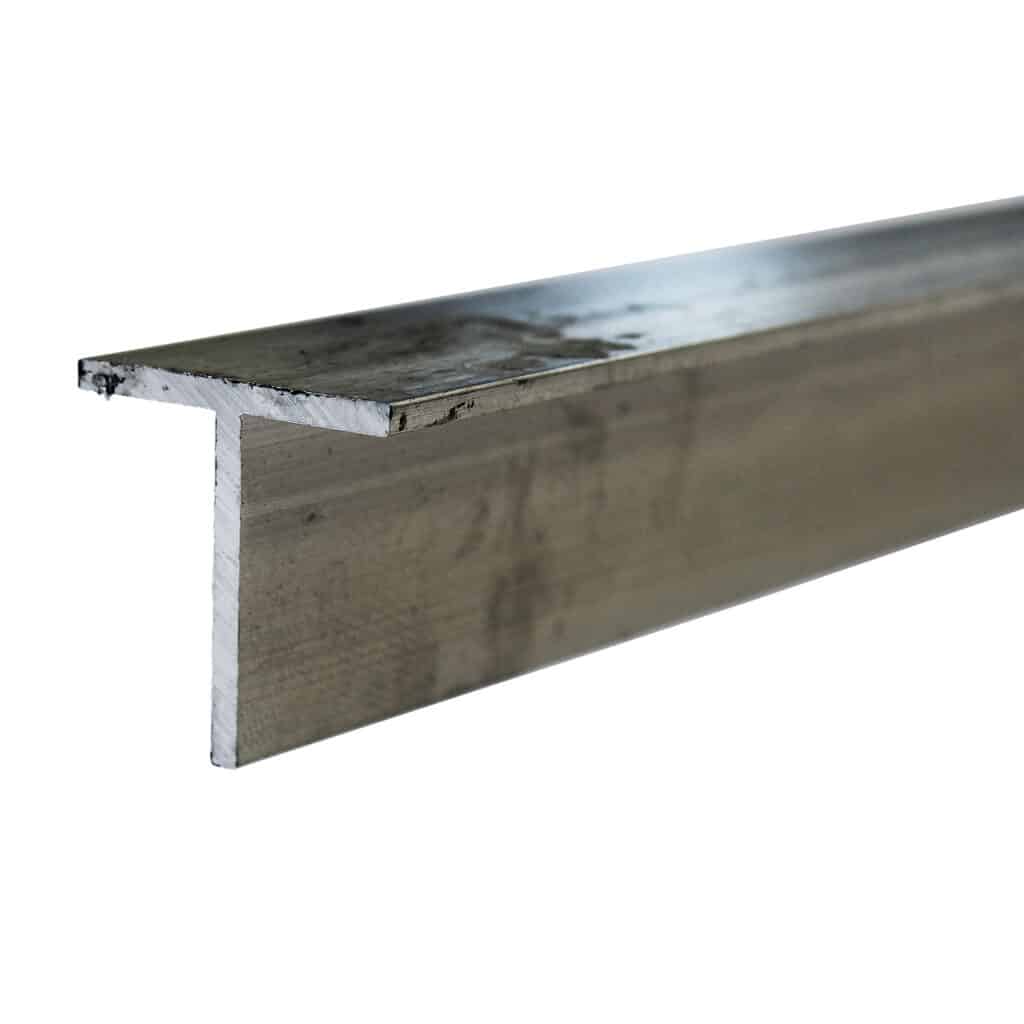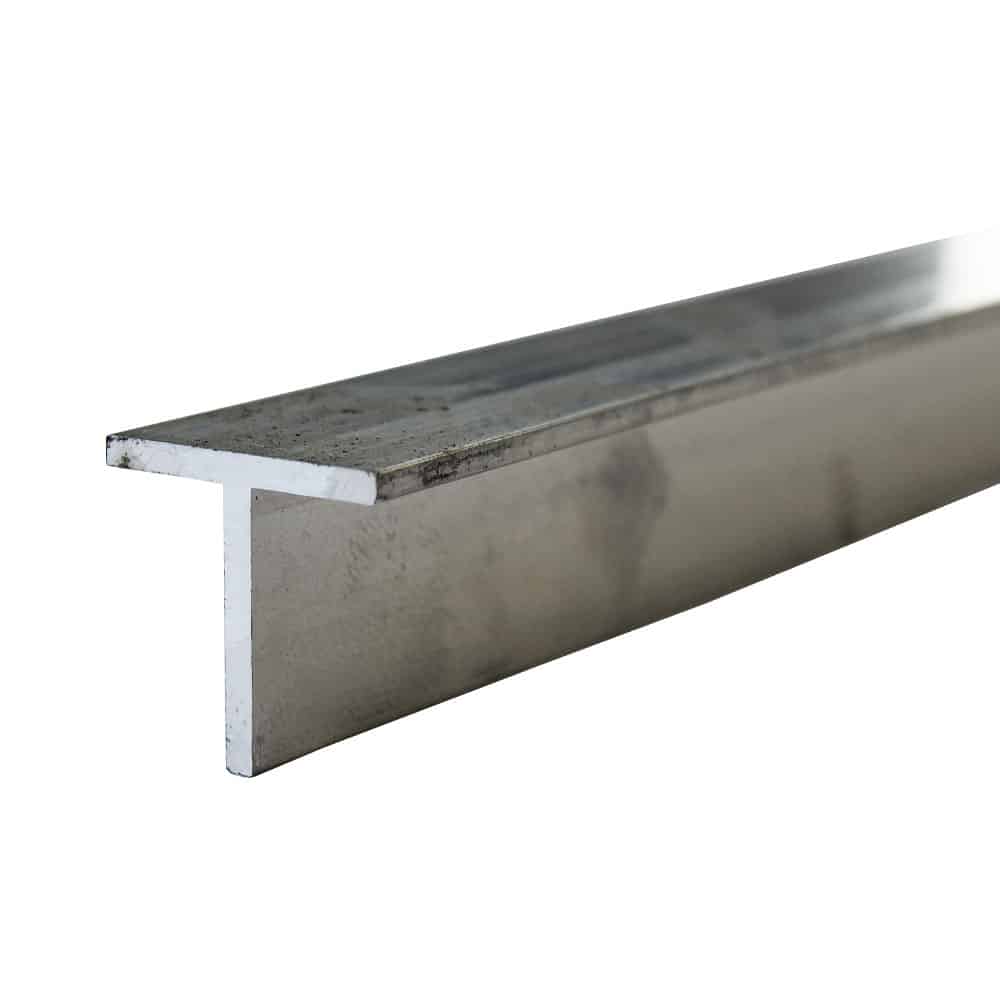- Massive Range
- FREE UK Delivery
- Rapid Dispatch
- Massive Range
- FREE UK Delivery
- Rapid Dispatch
- Massive Range
- FREE UK Delivery
- Rapid Dispatch
£15.49 – £39.99 inc VAT

Secure payments taken with:

This website is secured:
£ MULTIBUY SAVINGS – Order 3 For 10% Off
✔ Specialists In Rapid Shipments Of Any Size
✔ FREE UK Delivery Included
✔ Immediate Express Dispatch From Stock
✔ Tracked Delivery with Order Updates
✔ 30-Day Returns Accepted
@ ☏ Bespoke Cuts & Longer Lengths Available
Looking for a high-quality aluminium tee bar that’s perfect for your Industrial applications? Look no further than the 1.1/4″ x 1/8″ (3.2mm) Wall aluminium tee bar section by Speciality Metals! Made from top-grade aluminium, this tee bar is both corrosion-resistant and highly recyclable, helping you minimise your impact on the environment. What’s more, its excellent heat and electrical conductivity make it an ideal choice for a wide range of applications, while its shiny, durable finish gives it a sleek and professional look. And of course, with its lightweight, malleable design, this aluminium tee bar is easy to work with, ensuring that your projects will come out looking just the way you want them to. So why wait? Order yours today and take your projects to the next level!

Aluminium tee bar has a wide array of features that make them versatile and functional. Due to its exceptional corrosion resistance, it is the perfect choice for wet or humid environments. Furthermore, it is an eco-friendly option due to its 100% recyclable nature. Heat and electrical conductivity are its primary characteristics, making it an integral component of electrical and HVAC systems. Further, the shiny and reflective surface of aluminium enhances the aesthetics of any project while serving as a durable material. In addition, it is an excellent choice for applications requiring a lighter weight. As a malleable material, it can be shaped into almost any shape, making it ideal for a wide variety of applications. Aluminium tee bars are a popular choice across a wide range of industries because of their combination of features.
We also carry a wide range of aluminium as sheet metal, round tube, U channel, angle iron and flat bar.
Speciality Metals is known to be the United Kingdom’s best up-and-coming small-quantity metal company.
Furthermore we stock a vast range of aluminium tube lengths that compliment our mesh range perfectly.
Over 50,000 customers of Specialty Metals are provided with fast, friendly customer service every year. We’re the place to try when you need metal of any shape and size. We’re based in Warrington, UK.
We pride ourselves on our rapid turnaround and a large range of options.
We are developing our online offers to give more customers access to the best metals and mesh available in the UK.
Our mission is to be the UK’s go-to supplier for small-quantity metal requests. With an ever-growing range of products, we provide you with high quality materials, outstanding customer service and fast delivery times. Our experienced staff
Construction:
Industrial Uses:
Transportation:
Marine Applications:
Railways:
Furniture Design:
Electrical:
Retail and Exhibition Displays:
DIY Projects:
Solar Panels:
Aluminum, as a material for T-sections, offers a unique combination of attributes that often make it a superior choice over other materials. First and foremost, aluminum boasts a high strength-to-weight ratio, enabling the creation of structures that are both strong and lightweight. This is especially advantageous in industries like aerospace and transportation, where weight savings can lead to increased efficiency and performance. Additionally, aluminum’s inherent resistance to corrosion ensures a longer lifespan in environments where other metals might deteriorate rapidly. Its non-magnetic nature is crucial in applications where electromagnetic interference could be a concern.
Moreover, aluminum is highly malleable and can be extruded into intricate T-section profiles to meet specific design requirements. This versatility in design is complemented by aluminum’s excellent thermal and electrical conductivity. Furthermore, from an environmental perspective, aluminum is recyclable, making it a sustainable choice as its recycling process consumes only a fraction of the energy required for primary production. Given all these advantages, selecting aluminum for T-sections becomes a logical choice for a multitude of applications.
Absolutely, aluminum T-sections can be welded, though the process differs slightly from welding more common materials like steel. Welding aluminum, including T-sections, requires particular expertise due to aluminum’s distinct characteristics. The metal’s high thermal conductivity means it dissipates heat quickly, which can influence the welding process. Additionally, aluminum forms an oxide layer on its surface when exposed to air; this layer has a higher melting point than the underlying aluminum. Hence, proper cleaning and the use of the right welding techniques are crucial to penetrate this layer and achieve a strong weld.
TIG (Tungsten Inert Gas) welding is the most common method used for welding aluminum T-sections because it offers better control over the welding process, though MIG (Metal Inert Gas) welding can also be employed in some cases. To ensure a strong and effective joint, it’s essential to choose the appropriate filler material and welding parameters. Given these specific requirements, it’s often advised that those welding aluminum T-sections have specialised training or experience to ensure the structural integrity and longevity of the weld.
Cutting aluminum T-sections can be achieved using various methods, depending on the tools available, the precision required, and the scale of the operation.
Hand Saw:
Hacksaw:
Circular Saw:
Miter Saw:
Jigsaw:
Band Saw:
CNC Machines:
Plasma Cutting:
Regardless of the method chosen, there are some general tips to remember:
Certainly! Aluminum T-sections are both great for anodising and painting, enhancing their appearance, improving their corrosion resistance, and providing a surface suitable for various applications.
Anodising is an electrochemical process that thickens and toughens the naturally occurring protective oxide layer on the surface of aluminum. This process makes the aluminum more resistant to wear and corrosion. Anodised aluminum also provides a better adhesive surface for paints and glues than bare metal. One of the significant benefits of anodising is the ability to introduce color to the aluminum, resulting in a vibrant, durable finish. Anodised layers are transparent and can retain the metallic sheen of the aluminum while adding a layer of color.
Painting, on the other hand, provides a way to achieve a broader range of aesthetic finishes and can also add a layer of protection against environmental factors. Before painting, it’s crucial to prepare the aluminum surface to ensure proper paint adhesion. This involves cleaning the surface to remove any oils or contaminants and then using a primer specifically designed for aluminum. After priming, the aluminum T-section can be painted with various types of paint, including acrylics, enamels, or epoxies, depending on the desired finish and application.
Check out our blog illustrating how to install and maintain aluminium T section. It will prove a useful read to help you to make an informed decision on which material would work best for you.
We are also very proud of our ever expanding YouTube channel.
Our goal for our blogs and help guides is to answer as many questions as possible to help to explain the possibilities of mesh to our customers. Contact us today if you have any questions at all. We are always really keen to help in any way that we can.
We are also very proud of our highly popular eBay store, check us out there too.
Thank you for checking out our product.
£16.49 – £44.99 inc VAT
£15.49 – £39.99 inc VAT

£16.49 – £44.99 inc VAT

£15.49 – £39.99 inc VAT
Speciality Metals
Unit 1, Farrell Street, Warrington,
Cheshire, WA1 2WW, United Kingdom
Quick Links
Payment Options
